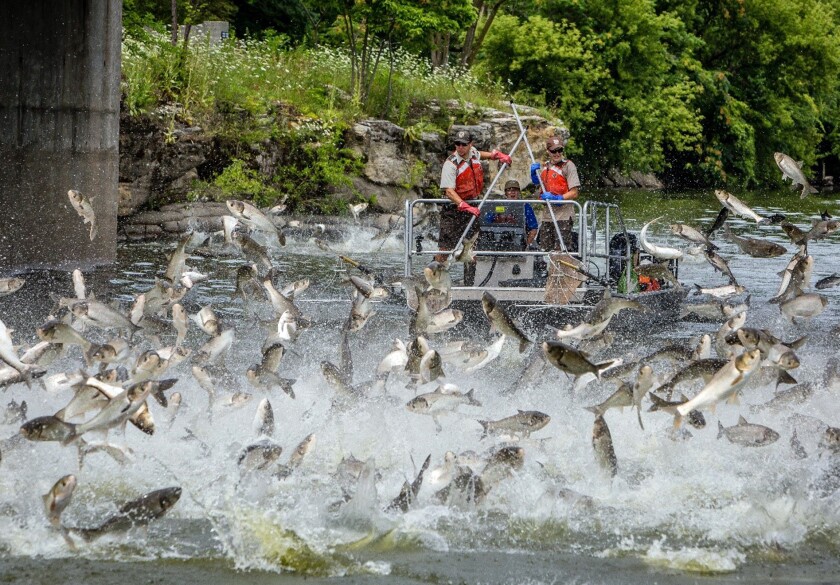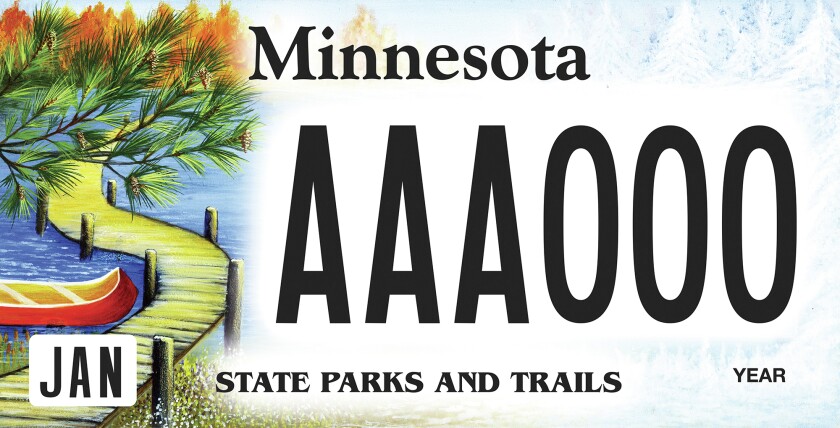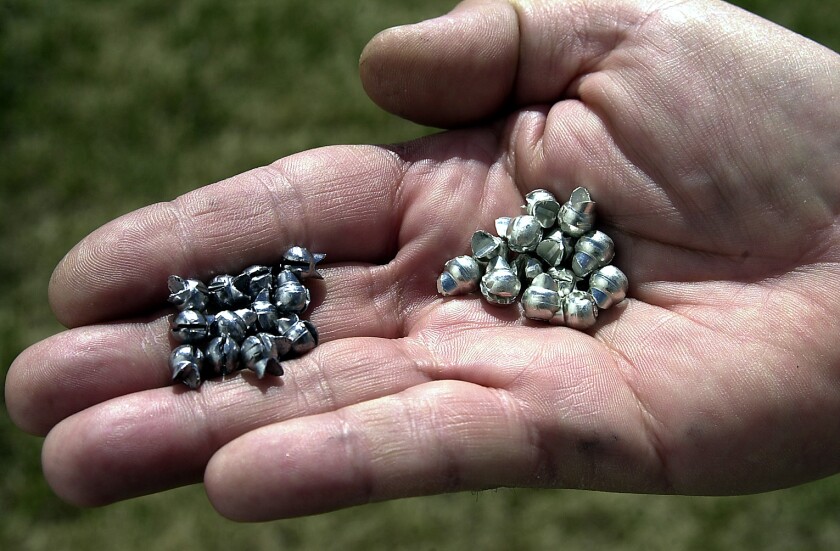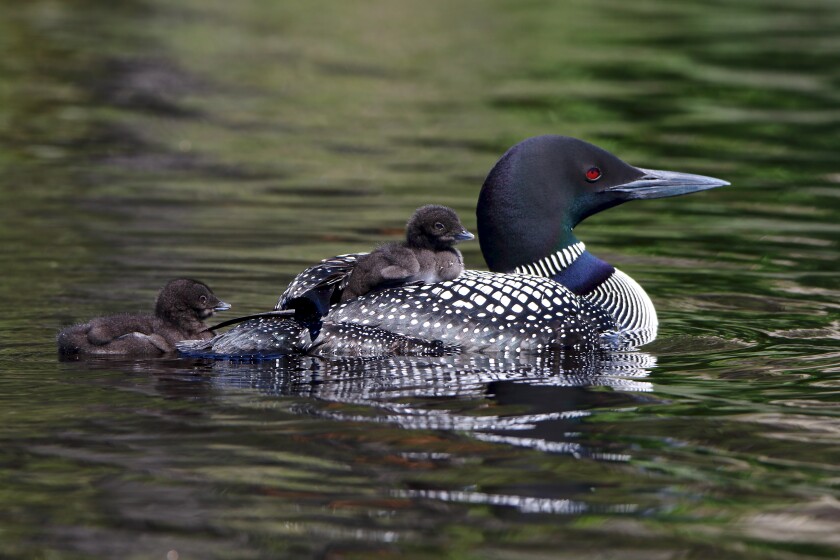ST. PAUL — The Minnesota Legislature's 2024 session ended in acrimony and shouting between political parties late Sunday, but not until after lawmakers had already approved a wealth of new rules and funding for outdoor issues and needs.
New rules will allow the state’s northwestern elk herd to grow and potentially supply an elk relocation effort by the Fond du Lac Band of Lake Superior Chippewa to restore the big animals in Carlton and southern St. Louis counties.
ADVERTISEMENT
Anglers, hunters, cross-country skiers and others won’t have to carry a paper license on their person starting in March thanks to changes to statutes that now allow electronic proof of licenses and an app-based licensing and game registration system.

Money was approved to pay for a new invasive carp barrier on the Mississippi River and funding to buy land to expand the state’s managed forests.
Except for the state bonding/construction bill that included outdoor projects and failed to pass in the session’s final minutes, most other natural resource legislation was approved on time.
“Most of the important (natural resource) legislation made it across the line before things turned bad at the end,’’ said Bob Meier, assistant commissioner of the Minnesota Department of Natural Resources who oversees government relations. “The big thing we didn’t get was the bonding bill. … But a lot of things were funded in other bills, so many of the outdoor things came out OK.”
Rep. Rick Hansen, DFL-South St. Paul, chairman of the House committee that oversees outdoor and natural resource issues, said the shorter 2024 session wasn't intended to match the 2023 budget session, which provided unprecedented funding for outdoor projects, parks, trails and conservation. Instead, Hansen said, this year’s effort was more focused on policy changes.
Hansen said his committee, and the environment committee in the Senate, worked across party lines to move legislation before political rancor slowed the process to a crawl.
“Fishermen and hunters get up early and get going, and that’s what we did in the House and Senate with natural resource (legislation) and that’s why we got our work done,’’ Hansen told the News Tribune.
ADVERTISEMENT
Here’s some of what Minnesota lawmakers did over the past four months before the session ended Monday.
State buying more Potlatch forest land

The 2024 legacy budget bill, already signed into law by Gov. Tim Walz, invests almost $193 million in the Outdoor Heritage Fund, including $22.5 million to purchase another nearly 19,000 acres of forested land across northern Minnesota.
One of Minnesota's largest-ever land conservation efforts was struck in 2020 when in northern Minnesota from the PotlatchDeltic Corp. for $48 million. The deal permanently preserved the forested land as undeveloped for wildlife habitat, public recreation and sustainable timber harvest while also protecting water quality and preventing the land from being sold in parcels for development.
Combined, the scattered parcels are more than twice the size of Minnesota's largest state park and will now permanently protect wildlife habitat, provide loggable timber for the region's wood products industry and, in most cases, provide public access recreation for grouse and deer hunters, birdwatchers, berry pickers and others.
Of this year’s purchases, about 10,600 acres will go into state forests and 8,200 acres to county-managed forests.
The parcels, which Potlatch had owned for decades to supply its paper and lumber mills with trees, are located in St. Louis, Carlton, Itasca, Koochiching, Aitkin, Becker, Beltrami, Cass, Clearwater, Crow Wing, Hubbard, Kanabec, Morrison and Wadena counties.
The Conservation Fund has already transferred thousands of acres to the state, tribes and counties in smaller sales and will continue to sell off the land as funding becomes available, said Emilee Nelson, Minnesota associate state director for The Conservation Fund.
ADVERTISEMENT
Slowing invasive carp's northward migration

The Legacy bill also invests $12 million to install a barrier in the Mississippi River in southern Minnesota to prevent invasive carp from swimming upstream and over $25 million in the Clean Water Fund focused on addressing nitrate pollution in southern Minnesota, well testing and riparian floodplain protection and restoration. The bill also includes $9 million to improve parks and trails.
The DNR will partner with the U.S. Fish and Wildlife Service, the Army Corps of Engineers and the U.S. Geological Survey to design and install the carp barrier at Lock and Dam No. 5 near Winona, a location some researchers believe is the most effective location for a deterrent.
The federal agencies are expected to pay for as much as half the cost.
The location is just upstream of where the DNR is finding increasing numbers of invasive carp, particularly silver carp. Lawmakers didn’t specify the type of barrier. Other states are testing electric and acoustic systems that use sound and/or a bubble curtain to deter the invasive fish from swimming upstream.
Invasive carp, native to Asia, have been steadily advancing up the Mississippi River since their accidental release from fish farm ponds in southern states in the 1970s. They are voracious eaters and outcompete native fish, leading to a decline in biodiversity and water quality. Anglers are concerned the fish may be moved or expand their range into other rivers in lakes in addition to the Mississippi if their northward migration isn’t checked.
More elk for Fond du Lac project

Legislation passed that will allow one of the state’s three elk herds in northwestern Minnesota to grow.
ADVERTISEMENT
The DNR had been limited by a decades-old law that demanded the elk herds had to be kept small to avoid damage to crops. But supporters say the herds can be allowed to grow enough to help enough to provide elk for a relocation effort by the Fond du Lac Band in Carlton and southern St. Louis counties in eastern Minnesota.
Under the new law, the Kittson Central herd can grow up to 30% over the DNRs current population goal.
Fond du Lac wildlife officials hope to have everything in place to begin the relocation effort starting in 2026 — the first wild elk in eastern Minnesota in nearly 150 years. Funding for the elk project was already approved by the 2023 Legislature.
Electronic licenses starting next year
The Minnesota DNR is ready with an app that will allow hunters, anglers, skiers, snowmobilers and other outdoor license holders to buy and store their licenses on their phone, or take a photo of their licenses to use as proof, starting in March, when next year’s fishing licenses will be required.
All game registration, such as deer, bear and turkey, will also be handled on the free DNR licensing app.
People will still be able to purchase a license online or at a bait shop or store and print them out, but the historic shiny-blue licenses will be a thing of the past.
ADVERTISEMENT
No fee for early goose season hunting
The separate fee for the Canada goose special season hunting fee has been eliminated. Hunters will still need their state license and state and federal waterfowl stamps.
Blaze orange on ground blinds is deer season only
Legislation clarifies the requirement that ground blinds on public land have visible blaze-orange material displayed applies to blinds used by deer hunters, not turkey hunters.
Wild pigs

Lawmakers approved giving the DNR authority to control, manage and enforce new rules regarding wild pigs, also called feral hogs, and domestic pigs that escape or are released to become wild. Officials have been concerned that released or escaped pigs can become wild and threaten to root up vegetation and damage wildlife habitat.
Money for sheriffs for ice rescues
New legislation allows the DNR to reimburse a sheriff for costs that are over and above the county sheriff’s regular operating budget incurred from search-and-rescue operations due to recreational activities on unsafe ice.
The Legislature gave the DNR $200,000 to offer grants to sheriffs for up to $5,000 per incident.
The move comes after a string of rescue efforts during the record-warm winter when anglers ventured out on unsafe ice requiring large-scale rescue operations using boats, airboats and other craft, requiring big expenses in staff time and equipment by local sheriff’s offices.
ADVERTISEMENT
Importing deer carcasses for taxidermy allowed
Lawmakers partially relaxed the state's nearly total ban on bringing unprocessed deer, moose, caribou and elk carcasses into the state from other states or provinces and will now allow those carcasses to be imported, but only if they go directly to a licensed Minnesota taxidermist. Taxidermists are then required to dispose of any unused portion of the carcass in a lined landfill facility to prevent the spread of chronic wasting disease.
A single statewide trout fishing opener

Trout season for brown, brook, splake, lake and rainbow trout will all be the same, from Jan. 1 to Oct. 31 each year statewide, except streams flowing into Lake Superior. Current state law has separate opening dates for trout inside and outside the Boundary Waters Canoe Area Wilderness.
Permission required to place traps/snares on private land
A provision was passed that requires someone who is setting or placing a snare or trap on private property to first get written or verbal permission from the owner, occupant or leasee of the property. Private property is defined as land occupied by an owner or tenant or private land that is 10 acres or less. The provision does not apply to private property that is more than 40 acres and used primarily for timber production or located north of U.S. Highway 2, or to state, federal or local governments removing animals causing damage or otherwise being a nuisance.
You can keep, but not eat, gifted beaver
Legislation passed that will allow landowners to keep any beaver trapped by professional trappers on their land for tanning or to feed to sled dogs or other purposes Current law prohibited the trapper from giving the beaver to the landowner. It remains against state health laws, however, to eat gifted beaver. You can, however, eat any beaver you trap on your own.
Bear fat soap is OK to sell
Legislation was passed that allows people to use fat from harvested bears to make soap to be sold. It had been illegal to use parts of any hunted animals for commercial purposes.
Plastic boat wrap stewardship
Lawmakers moved to get a handle on the vast amount of plastic shrink wrap that’s used each fall to winterize Minnesota boats. They approved a provision that calls for a mandatory boat plastic wrap recycling program by the Minnesota Pollution Control Agency so the trash doesn’t end up blowing in the wind or taking up space in landfills each spring when the boats are unwrapped.
A new state park license plate

Lawmakers approved a provision that orders the DNR to hold another contest among the public to design a new state park license plate. Some lawmakers don't like the current 8-year-old design that features an S-shaped dock on a lake, with some lawmakers noting there are no S-shaped docks in Minnesota.
What didn’t pass this year
Shotgun-only deer hunting zone remains
Once again bills were introduced, but did not pass, to eliminate the state’s rule requiring shotguns and not rifles for deer hunting in much of the southern and western portions of the state.
No action on lead fishing tackle, ammunition

Bills that would ban small lead fishing tackle and move hunters and recreational shooters toward non-toxic shotgun ammunition both failed to advance. Supporters say the toxic lead products are killing otherwise protected birds like loons and eagles that consume them and are also threatening human health. Opponents say alternatives to lead are too expensive.
'Outdoor �������� for All' funding fails
Legislation advanced but did not pass that would have provided $2 million to pay for more elementary children across the state to attend one of the five environmental education learning centers, such as and Osprey Wilds near Sandstone.
Outdoor �������� For All Minnesota would fund three-day, two-night immersive nature courses for students. This would include all programming, transportation and ancillary costs such as teacher stipends, making these trips entirely free to students and schools. Students now generally must pay out of pocket or raise money to attend the outdoor courses.
The other accredited outdoor environmental learning centers are Deep Portage Learning Center in Hackensack, Eagle Bluff Environmental Learning Center in Lanesboro and Long Lake Conservation Center in Palisade.
The bills were sponsored by Sen. Grant Hauschild, DFL-Hermantown, and Rep. Kristi Pursell, DFL-Northfield. Currently, only about 29% of Minnesota elementary students have access to the program.






















